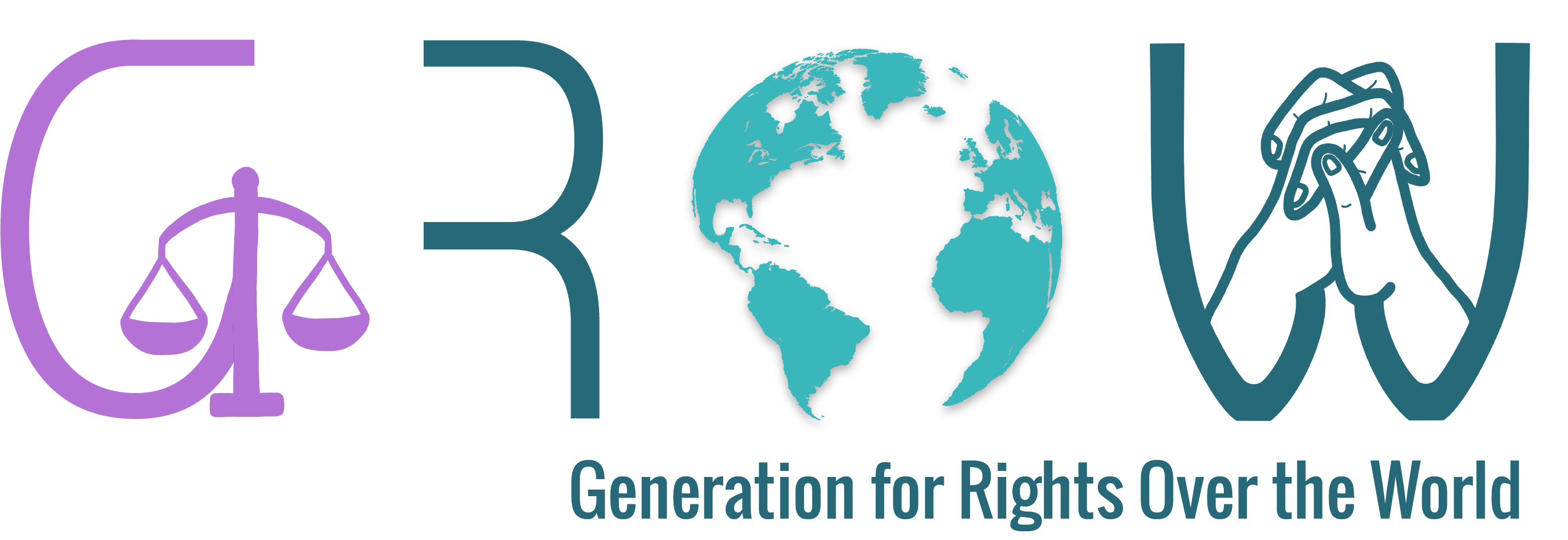Translated by Vincent Lefebvre
Abstract
Rap is essentially a male music said to be used to assert dominance over women. It reflects a capitalist society dominated by patriarchy. In fine, the struggle is the same, both in rap and in feminism; to fight against a patriarchal society which aims only at reproducing. The feminist struggle not to let anyone dominate and order women also applies to listening to music that is sexist. In reality, the focus on rap goes beyond the question of feminism, it is a broader identity focus, namely racial, gender and socio- economic class.
In this essay, I would argue whether being a feminist is compatible with listening to misogynistic rap. Addressing this issue requires first of all explaining the presence of sexist lyrics in rap music to understand the extent to which the message delivered would differ from the values defended by feminists. This directly raises the issue of the writing context to grasp what drove the rap world to embrace such a degrading image of women.
« Bitches ain’t shit but hoes and tricks
Lick on these nuts and suck the dick
Get’s the fuck out after you’re done
And I hops in my ride to make a quick run. » (Dr. Dre, Bitches Ain’t Shit)
Dr. Dre’s lyrics perfectly reflect the vision that the collective imaginary has built up of rap over the years. In the collective consciousness, rap is essentially a racialized male music that some rappers use as a relay for their domination over women. We can identify two moments in rap history that provide explanation for the presence of sexist language in rap. It is not a question of legitimising their use, but of understanding the meaning of their use in order to deduce whether it is okay to be feminist and listen to sexist rap.
Originally, rap is a cultural and musical movement rooted in the Hip-Hop culture that emerged in the ghettos in the 1970s United States. For nearly 20 years, rap remained a musical genre proper to the Black community in America. It was a way for them to denounce their daily life, poverty, drugs, weapons but also police violence and the street in general and to fight against a system in and by which they were oppressed. Rap is above all the expression of feelings, of a dissent reality. Nevertheless, this form of political dissent carries dimensions that reveal rather problematic discourses. Among these discourses, sexism is central.
Tom Shelby’s typology of forms of dissent allows us to draw a distinction between “pure” and “impure” forms of dissent. The former are those that follow the moral principles of societies and are inspiring. The latter correspond to those problematic forms of discourse that one can find in rap. Although an expression of a form of oppression, rap can itself be a source, whether willingly or not, of domination and especially over women. According to sociologist Elijah Anderson, misogyny in rap is the result of biased gender relations in urban neighbourhoods where men feel the need to demean women in order to improve their own social standing and self-esteem.
This extended gender order has influenced rap music. Indeed, the extent to which rap music, and particularly male rap artists, embrace male supremacy in their lyrics can be linked to broader societal opportunities for asserting their hegemonic masculinity. Hegemonic masculinity has been framed as attitudes and practices that reproduce heterosexual male domination over women. Regarding poor and marginalized Black men who have historically faced barriers to asserting their masculinity, music has been used as an alternative means for doing so. Such masculinity implies the acceptance of attitudes that objectify women and practices that demean them to gain in legitimacy. Nevertheless, the appearance of such sexist statements in rap must be considered in the post-segregationist context, where African-American populations were still largely discriminated against. This does not legitimize for glorifying the exploitation of women, but, originally the use of misogynistic language was not an end in itself, but a tool to challenge the White elite while delivering a political message.
Indeed, for Shelby, rap is a real political discourse. Eloise Bouton agrees with Shelby on this point. Although sexist at times, rap remains above all a form of denunciation of society, a political discourse, which in the end is not so far from the dominant feminist discourse. Rappers come from a popular social environment and denounce the social, economic but also political oppression of a racist and classist system. This is where rap and feminism meet, that is to say in the struggle against the possession of all privileges by a White elite. We can even hypothesize that misogynistic rap is actually just a mean for rap artists to point out a societal problem, namely the objectification of women and any bias done to women for their gender; and this in order to make people aware of a reality that many people ignore. We will see later why such a hypothesis is not easily justifiable and therefore must be balanced.
In the early 1990s, rap started to become more popular and White people started rapping, as Eminem did. This had the effect of propelling rap to the ranks of world music and generating a large flow of money. Meanwhile, rap has also become more oriented towards gangsta rap. Indeed, in rap, there is what is called the “rap game”. It is a fictional competition between rappers to name the one who dominates the genre. This competition encourages artists to be more and more provocative, transgressing the moral principles of society.
As we talk about a fictional dimension of rap, would it not be appropriate to address the question of the separation of art and artist. In the cinema, we don’t say that an actor who plays the role of a misogynist character is himself a misogynist. Why does this problem arise in the case of a rapper whose music contains misogynist remarks?
The issue of second degree has an unquestionable place in this analysis. When listening to music with sexist, homophobic or racist overtones, it is important to take a step back from this fiction. Indeed, rap is first and foremost an art and like any art, it is inspired by reality. To see sexist rap as an attack on women is perhaps to miss the real message of the music. Historically, rap was created to denounce a reality. Its very essence is a subversive and political music that is there to replace society’s violence with a creation. Certain musics could appear sexist at first glance without having the will to be, but only reflecting a reality with the sole purpose of raising awareness. So it is sometimes necessary to be cynical and read between the lines in order to detect the hidden meaning that some lyrics may contain, but also be aware that it reflects a reality.
In fine, regarding the case of those rappers that take hold of societal issues to denounce it, women and feminists, can if they are willing to, separate art from the artist. They can also boycott artists whose behavior outside their committed art is really problematic and dangerous towards women. In any case, they don’t have to be judged on the basis of this choice that only belongs to them. The term “problematic faves” was coined to designate celebrities, such as Chris Brown, Kodak Black or XXXTentacion, who, outside their art, adopt misogynistic and violent behavior towards women. This is where one of the main struggles of feminisms to put an end to prevailing societal sexism lies. These are struggles, both political and judicial, that are waging within society. Nevertheless, it appears as important to identify the institutions that promote sexism within rap music. Indeed, rap is a popular music and is listened to mostly by young people whose socialisation may be affected by the presence of such statements in the lyrics. There is a need to take a deeper attention to the systems of oppression and institutionalised sexism within the society that encourage these lyrics to be written in the first place.
Throughout the writing process, rap artists are not only affected by the competition but also by the pressures of music industry elites. In order to maximize sales, record industry magnates encourage provocative and daring lyrics. Producers not only encourage artists to become hard-core, but also exclude or marginalize artists who go against the flow. These practices have resulted in a directly proportional relationship between the explicitness of rap and the sale of its records. In response to company pressure, many artists are giving up on political and social messages and focusing rather on material wealth and gender exploits. Those who decide to denounce societal issues, have to do it in a more subtle way in order to expect to be produced and so see their message unveiled, implying a need for the listener to step back from the words.
The pressure on rappers to deal with hard-core themes is perhaps most evident within gangsta rap. According to the former President of Def Jam Records, Carmen Ashhurst-Watson: “The time when we switched to gangsta music was the time that the majors bought up all the labels. And I don’t think that’s a coincidence. At the time we were able to get a bigger place in the record stores, and a bigger presence because of this major marketing capacity, the music became less and less conscious”.
As the world of rap has become the product of capitalism, the “rap game” has become such an institution for rappers that they have to find ever more provocative subjects or ways of writing or interpreting. This leads to the gradual disappearance of moral conduct but also of talented artists committed to social commentary.
Indeed, the music industry is fueled by the controversial issues in society in order to sell and to be sold; yesterday the denunciation of living conditions in the ghettos and nowadays the condition of women, their objectification, the violence they can suffer from, the discrimination and gender bias that they undergo on a daily basis from society.
But why shouldn’t women be allowed to freely listen to rap music due to the rap industry choice to produce music that objectifies them for the sole purpose of making money? Women have always been told what to do or not. The doctrine of feminisms is to fight the domination of patriarchy over society in order to achieve gender equality. They are free thinkers, who do not allow people to determine what they have the right to say, do or think, and who fight because “women should have the same access to men”. That’s why some feminists including Marxist feminists and radical feminists won’t listen to sexist rap by doctrinal choice.
In reality, the focus on rap goes beyond the question of feminism, it is a broader identity focus, namely racial, gender and socio-economic class. Accusing rappers that contribute to gendered socialization and perpetuating gender inequalities is also to stigmatize a type of music that, such as feminism, is born to denounce social realities that impact the daily lives of minorities. Rap is not the only musical genre to be misogynistic, but it has the distinction for being explicitly misogynous, unlike many other genres such as rock or White artists, like some of the greats of French popular musical background. While some feminists choose not to listen to sexist music, others choose to listen to it and none of them deserve to be despised on the basis of that choice. Women are as capable as men of being critical, of reading between the lines or of grasping the real message delivered by certain rap songs which, at first sight, seem misogynous, but which in reality are intended to convey a political message.
Furthermore, stigmatising women who listen to sexist music is going against the ideals of feminism. Feminism is about women’s empowerment and self-determination of women. If listening to sexist rap music is enjoyable or empowering to them, it is nobody’s place to try to diminish or shame such behavior. Conversely, it is not acceptable to specifically condemn rap, as this amounts to muzzling the expression of a popular voice because of its origin. Indeed, many other musical genres and popular singers, such as Claude François or Michel Sardou, depict a degrading image of women. This leads to the domination of the White elite becoming more entrenched than it already is. The problem does not lie in rap or in any other musical genre; misogyny does not arise from art, although certain pieces contribute to its reproduction, but from a patriarchal society which legitimises the objectification of women. In fine, the struggle is the same in both rap and feminism; to fight against phenomena of various forms of domination, so that it is up to each person to freely express their own identity, whether as a feminist or a rapper.








Super helpful analysis. Thank you very much.